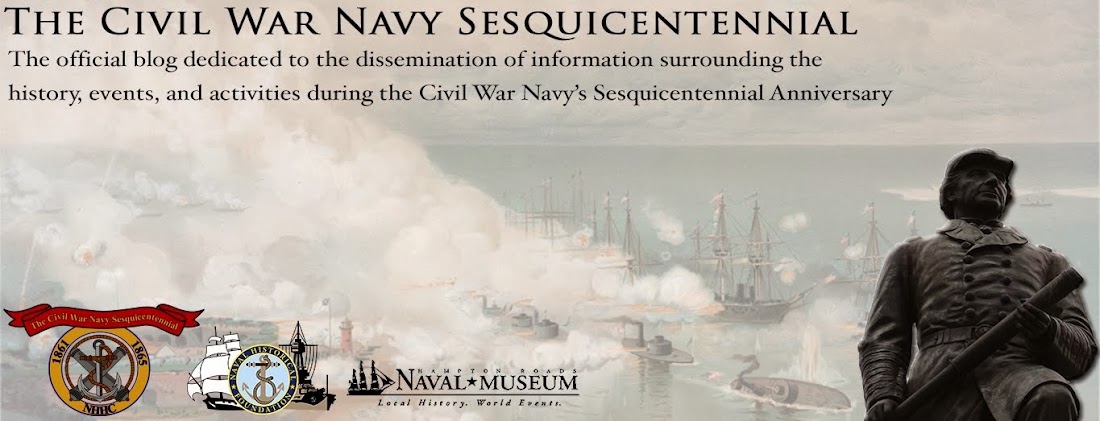In his opening remarks, Rear Admiral (Ret) Jay DeLoach, director of NHHC, drew our attention to common themes between Civil War naval operations and the "from the headlines" naval operations today. But he also presented this World War II era recruiting poster ...

... to illustrate how the public memory of the Civil War remained, and still remains, at the fore.
The speakers were identified in earlier posts, but allow me to list them again here, with a brief note about their topics for brevity:
- Dr. Craig L. Symonds started with a broad overview of the role of the navies in the Civil War as the keynote session.
- Dr. Robert J. Schneller provided presentations offering insight into some key naval leaders of the war - first with the relationship between President Lincoln and Admiral John Dahlgren, then later with profiles of Admiral David G. Farragut and Lieutenant William B. Cushing (whom he equated to a Civil War version of the modern day SEALs.)
- Andrew C.A. Jampoler offered a discussion of Civil War prisons with emphasis on the use of Washington Navy Yard facilities and naval vessels in that role.
- Dr. Robert M. Browning gave a detailed presentation on the blockade operations off both the Atlantic and Gulf coasts.
- Gordon Calhoun discussed the USS Cumberland's role in the battle of Hampton Roads, further offering a look at the ship's history and legacy.
- Fellow blogger Matthew Eng entertained with a presentation on the Civil War navies in public memory (with this very blog mentioned prominently!).
- Dr. Howard J. Fuller explored the broader aspects of ironclad warship evolution against he backdrop of international influences.
- Dr. William H. Thiesen introduced the wartime role of the U.S. Revenue Cutter Service, along with mention of the lighthouse and lifesaving services.
- William Connery covered the service history of the CSS Shenandoah and the last shots of the Civil War.
- Dr. Robert Neyland discussed recovery efforts of the submarine H.L. Hunley and provided an analysis of the recovered artifacts.
Speakers put much emphasis on the battle of Hampton Roads, with frequent use of images. Such reinforces Matthew Eng's point that the battle stands tall in our public memory of the Civil War navies.
I lost count of the number of times that Raphael Semmes' photo appeared on the screen. But to some extent the mention of Semmes did serve as a counter-prop to the emphasis on the blockade operations. However, being somewhat a "western theater" historian and an "Army" person, the one complaint I had was the limited mention of those brown-water riverine operations. But otherwise I found the presentations balanced, entertaining, and enlightening.
For those who missed the event, the talks were recorded. When (or if) those are posted, no doubt we will offer links.

No comments:
Post a Comment